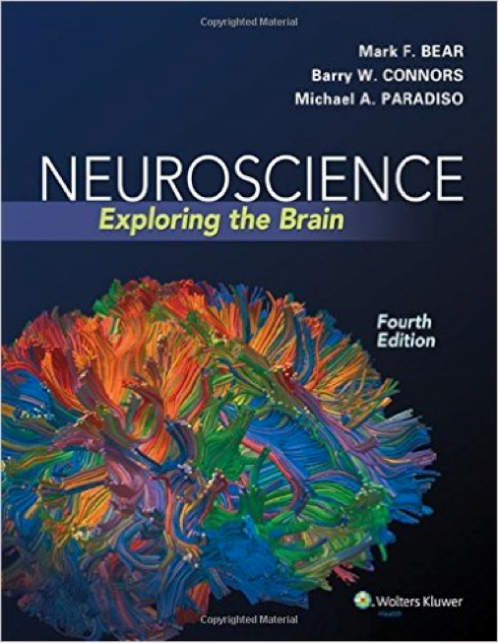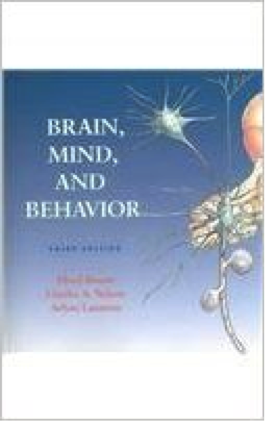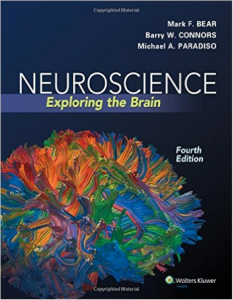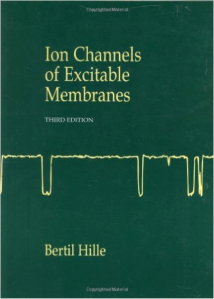What are the Best Neuroscience Textbooks? Which textbooks do elite universities use? And how you can buy them for cheap?

While researching last week’s post on the Best popular neuroscience books, I came upon many people asking:
Which is the best neuroscience textbook?
Is there any consensus? I looked up the top neuroscience graduate programs in the U.S.[1] and found syllabi from introductory neuroscience classes taught at these universities.
Here’s a couple tables summarizing the textbooks being used (More information about how to get these books for cheap, where I got this data, and a tip-off to a dope coloring book are all below):
Summary Table:
| Textbook | Number of institutions* | Institutions |
 Bear, Connors, Paradiso: Neuroscience – Exploring the Brain Bear, Connors, Paradiso: Neuroscience – Exploring the Brain |
3 (Note one of the classes using this text is the class taught by the author, Mark Bear) |
MIT, Johns Hopkins, UPenn |
 Kandel et al.: Principles of Neural Science Kandel et al.: Principles of Neural Science |
2.5 |
Stanford, UCSF, Columbia* |
 Purves et al.: Neuroscience Purves et al.: Neuroscience |
2 |
Harvard, Columbia |
 Carlson: Physiology of Behavior Carlson: Physiology of Behavior |
1 |
UCSD |
 Hille: Ion Channels of Excitable Membranes Hille: Ion Channels of Excitable Membranes |
1 |
UCSF |
 Kalat: Biological Psychology Kalat: Biological Psychology |
1 |
Brandeis |
 Bloom, et al.: Brain, Mind, and Behavior Bloom, et al.: Brain, Mind, and Behavior |
1 |
UCLA |
 Nicholls, et al.: From Neuron to Brain Nicholls, et al.: From Neuron to Brain |
0.5 |
Columbia* |
 Shepard: Neurobiology Shepard: Neurobiology |
0.5 |
UCSD* |
* Supplemental texts counted as half a point
There are a lot of caveats to this: rankings are arbitrary, good research programs may not necessarily have the best courses, different professors at a university may use different texts, and even the best courses may not use the best textbook. However, these table shows that there are a variety of textbooks being used, but there is some consensus about which ones are the best.
Of the three used by multiple schools, I’ve used two: Bear as an undergrad, and Purves as a TA for an undergrad class. Bear is the most basic and most appropriate if you haven’t taken a college-level intro bio class or if it’s been a while since you took one. If you know biology but not neuro, Purves may be better. Based on a conversation I had with a friend, if you already know some neuro, Kandel may be the most in depth.
So, which of these books can you get for cheap? Here’s a summary table with Amazon price info at the time I’m writing this:
| Textbook | Number of institutions* | Amazon Review | New | Used | Rent | Kindle | Previous Ed. Used | Notes |
| Bear, Connors, Paradiso:Neuroscience – Exploring the Brain |
3 |
5 | $115 | $76 | $26 | $127 |
$6 |
Note that one of the classes using this text is the class taught by the author, Mark Bear |
| Kandel et al: Principles of Neural Science |
2.5 |
4.7 | $129 | $104 | $63 | $119 |
$5 |
|
| Purves et al.: Neuroscience |
2 |
4.4 | $80 | $76 | N/A | N/A |
$11 |
|
| Carlson: Physiology of Behavior |
1 |
4.2*** | $217 | $199 | $77 | $152 |
$65 |
This is a brand new edition released Mar 4, 2016 |
| Hille: Ion Channels of Excitable Membranes |
1 |
4.5 | $97 | $83 | $30 | N/A |
$18 |
Specific to electrophysiology, or the electrical properties of cells |
| Kalat: Biological Psychology |
1 |
4.6 | $258 | $95 | $28 / $79 (kindle) | $163 |
$14 |
This is the #1 best-seller neuroscience textbook on Amazon. Kalat has published Fucking 12 editions of this book since 1981, so more than one new addition every 3 years. |
| Bloom, et al.: Brain, Mind, and Behavior |
1 |
4.7** | $71 | $4 | N/A | N/A |
$0.01 |
|
| Nicholls, et al.: From Neuron to Brain |
0.5 |
4.3 | $125 | $108 | N/A | N/A |
$23 |
|
| Shepard:Neurobiology |
0.5 |
5** | $136 | $22 | N/A | N/A |
? |
Couldn’t find previous edition on amazon |
* Supplemental texts counted as half a point, ** 5 or less reviews, *** Only one review on new edition 1, so this this the review from the previous edition.
How to Get Neuroscience Textbooks for Cheap
This second table illustrates absurd prices of university textbooks, and how quickly they drop off for old editions. Like tuition, textbook prices have been growing at an incredible rate, but unlike tuition they are usually not covered by financial aid:

From Dunn, 2004 – PhD Dissertation
If you want to buy your neuroscience textbooks for cheap, keep in mind that there is a seasonal fluctuation to neuroscience textbooks—because more people are buying them at the start of a semester and more are selling them at the end of the semester—so if you’re taking a neuroscience class in the near future, email that professor and see what textbook they are using. By buying a used textbook in the off-season you can save some cash and maybe find some interesting notes in the margin. In 2011 when they tracked prices, Cannon and Brickam report prices hit lows on June 10th and December 2nd.

From Cannon and Brickman, 2015 (I think I’m going to start a textbook arbitrage business.)
Additionally, College Textbooks are a strange market, where publishers practice price discrimination and sell international editions, sometimes for a fraction of the price. According to the New York Times, purchasing these books as an American is perfectly legal (though the seller may be in violation of the law). I personally bought an international edition of my biochemistry textbook, and while the pages were thin and occasionally the page numbers were a bit off, it was actually a lighter paper-back version that I was glad I was carrying compared with the standard edition.
Personally, I’ve saved all my old textbooks. I curse myself every time I move, but then I always imagine myself as an old man leafing through them and marveling at how much science has changed since my college days. (If you’re text-book author James Kalat, biological psychology has advances at such a great rate that the old edition of his textbook becomes out of date in less than three years :p).
Details of the courses used to generate this graph:
- Massachussets Institute of Techonology (MIT) – According to the latest syllabus I could find, for their 2007 OCX class taught by Mark Bear, they used—surprise surprise—the textbook authored by Mark Bear, Neuroscience: Exploring the Brain:
An older version of this textbook was actually used in the Introduction to Neuroscience class I took at Wesleyan University. It’s a good book, easy to read. I can remember the figures in the book and the example they gave, when I first understood how cells could generate electric potential. That really blew my mind.
- Harvard – Harvard has an introductory neuroscience course, Fundamentals of Neuroscience, online for free that as far as I can tell doesn’t use a textbook. I found a course through their extension school taught by Harvard Professor Laura Magnotti that uses Purves et al., Neuroscience:
This was also the textbook used when I was a Teacher’s Assistant for the introductory neuroscience class taken by third year neuroscience majors at Emory University.
- Johns Hopkins: I couldn’t find a syllabus for their college introductory course, but I did find one for the summer course they teach to advanced high school students. It used the aforementioned Bears, Connors, Paridiso Neuroscience – Exploring the Brain textbook, but also used a supplementary book for learning neuroanatomy, The Human Brain Coloring Book:
- University of California San Diego (UCSD): The introduction to neurobiology requirement for cognitive science graduate students uses Neil R. Carson’s Physiology of Behavior:
The UCSD reading list also recommends Gordon M. Shepard’s Neurobiology
- Stanford: Stanford’s Cellular Neuroscience course taught by Jeff Wine uses the Kandel et al., Principles of Neural Science Textbook:
- University of California San Fransisco (UCSF): UCSF’s graduate course “Basic Concepts in Cellular and Molecular Neuroscience,” recommends for a review of electrophysiology, or the electrical properties of cells, the appendix of the book I just mentioned Kandel’s Principles of Neural Science as well as Bertil Hille’s Ion Channels of Excitable Membranes:
I used Hille’s textbook for a cellular neurophysiology class I took as an undergraduate, and I found to be a really in-depth but clearly written textbook.
- Columbia University – Columbia’s Cellular and Molecular Neurobiology taught by Jian Yang, uses Purves et al.’s Neuroscience as their primary text. I’m a little surprised they didn’t use fellow Columbia professor Kandel’s, though actually his text, and Nicholls, et al.’s From Neuron to Brain are listed as supplemental texts:
- University of California Irvine (UC Irvine): couldn’t find any information online, but emailed the professors to ask what text they use.
- University of Pennsylvania (UPenn): UPenn’s Introduction to Brain and Behavior course taught by Julie McGurk, uses the Bears, Connors, and Paradiso textbook.
- Brandeis: Brandeis’s Introduction to Behavioral Neuroscience taught by Donald B. Katz uses J.W. Kalat’s Biological Psychology:
- University College London: Emailed the professors to ask what text they use for the introductory course, and they responded saying that instead they use a reading list based mainly on primary source scientific papers.
- University of California Los Angeles (UCLA): the course “The Brain Made Simple: Neuroscience in the 21st Century,” taught by Michael S. Levine and Joseph B. Watson uses the text Brain, Mind, and Behavior by Bloom, et al.:

- University of Oxford and University of Cambridge: Couldn’t find either the syllabi nor the relevant professor to email to try to get them. Are UK institutions less open about their courses?
That’s the list.
One of my personal favorite textbooks, though it isn’t an introductory textbook, is Nestler et al.’s Molecular Neuropharmacology: A Foundation for Clinical Neuroscience

Have you used any textbooks that you thought were particularly good? Please send me an email or leave a comment here, so other people can hear your opinion.
[1] Using PhD.org and the top programs in the world according to U.S. News and World Report
Filed under: Uncategorized | 7 Comments









thanks for the info
LikeLike
Sure, hope it helps!
LikeLiked by 1 person
One I have found useful, found online though, rather than from a university course, is “Behavioral Neurobiology of the Endocannabinoid System,” Editors: Kendall, Dave, Alexander, Stephen (Eds.) Springer 2009. The price is not low on the sources I checked, used prices were also not low; under $300 but over $200 even for the ebook – but I counted, I have seven bookmarks in my copy, I think it’s been worth whatever I paid for it (in 2011).
Paraphrased from the opening line of the preface – the endocannabinoid signaling system is found throughout the animal kingdom from simple invertebrates to man and within almost every type of cell.
The role within the central nervous system is the subject of the book within normal physiology and a number of central disease states, including depression, drug addiction, schizophrenia, feeding disorders, and Tourette’s syndrome.
LikeLike
Interesting, yeah looks like there is a slightly cheaper kindle rental: http://amzn.to/2dl56HT amazon also recommends “The Endocannabinoidome: The World of Endocannabinoids and Related Mediators” http://amzn.to/2dl466z
However, these seem like highly specialized books on a very niche topic. Obviously endocannabinoid signaling is very interesting as they are one of only two types “reverse” neurotransmitters that diffusely signal (is this still true?) back from dendrites to axons. They also may be interesting to some as they are the neurotransmitter that THC mimics. However, I really wouldn’t recommend this to anyone unless they have a very particular interest in that specific subject. (Of course I’ve never looked at these books, so feel free to chime in more if you disagree.)
LikeLike
Very helpful! Keep up the great work.
LikeLike
The Bear books is awesome. For cognitive neuroscience I really like Gazzaniga’s book. “Cognitive Neuroscience. The Biology of the Mind”
LikeLike